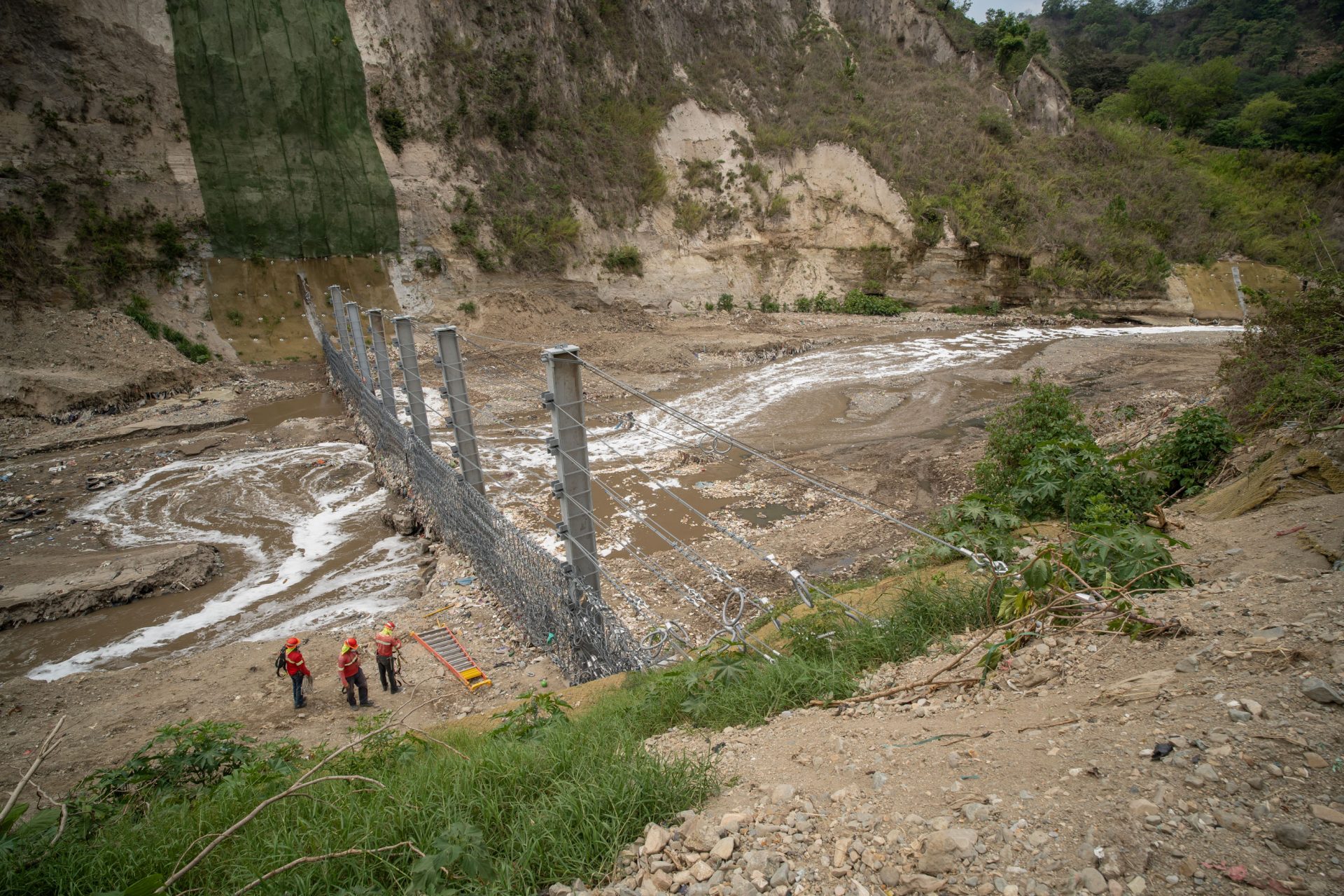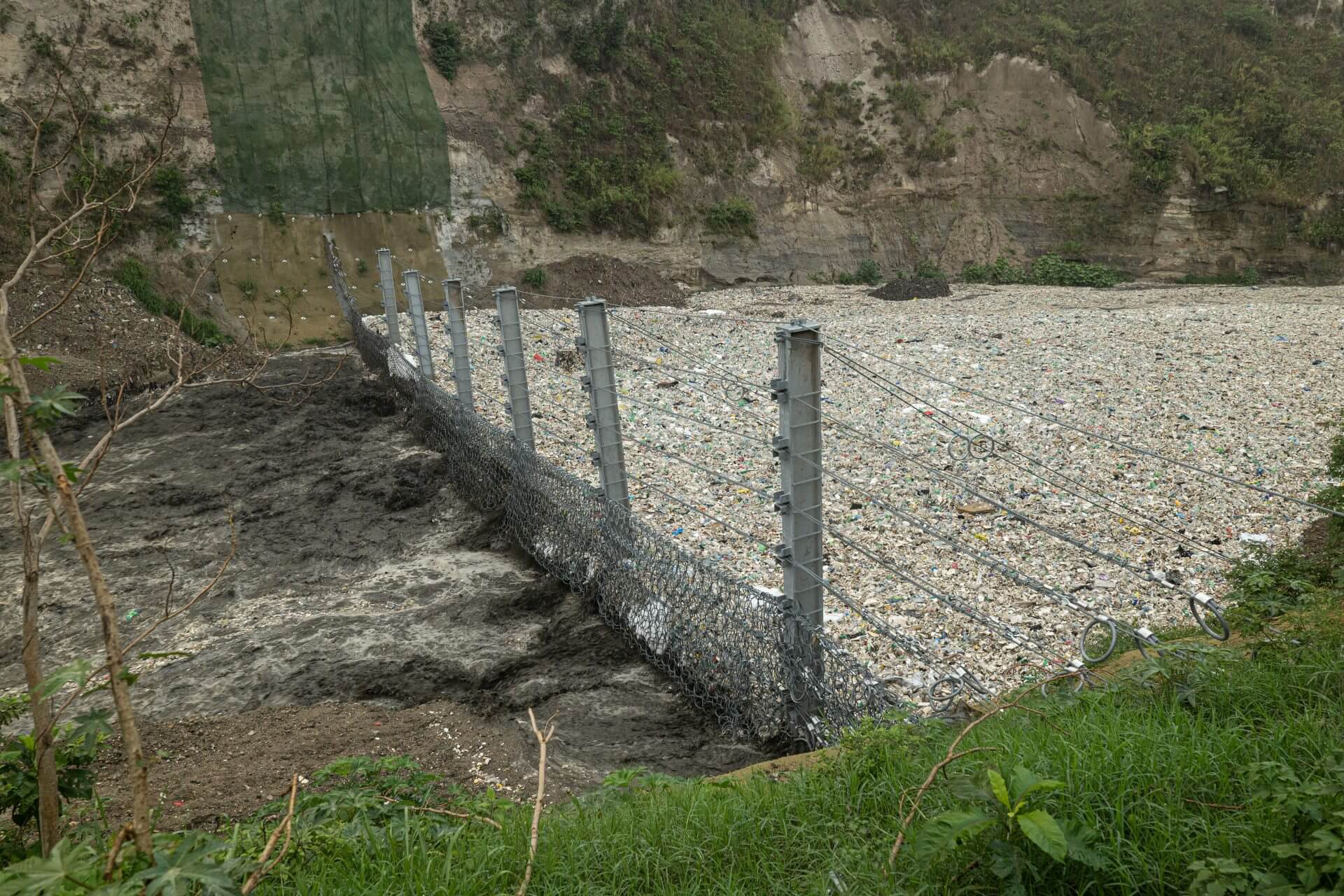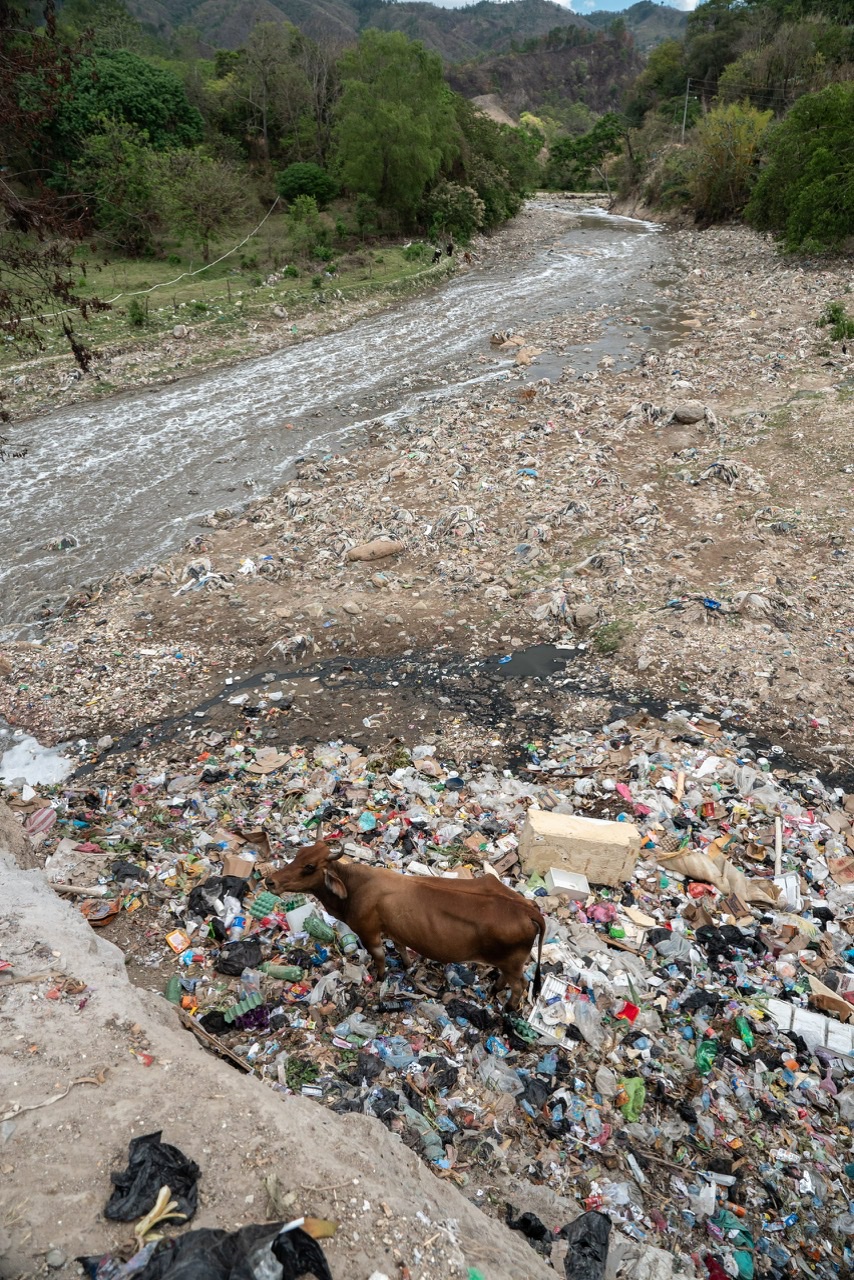
- Sustainable Planet -
- 5mins -
- 1,631 views
The Ocean Cleanup trials latest Interceptor 006 ‘Trashfence’ in world’s most polluting river
The experimental Interceptor 006 ‘Trashfence’ briefly halted a plastic tsunami in the Rio Motagua basin in Guatemala, then failed under the sheer force and weight of the mountain of debris collected.
THE OCEAN CLEANUP TRIALS NEW INTERCEPTOR Against trash tsunami
The Ocean Cleanup has begun work on intercepting plastic pollution in what CEO and founder Boyan Slat predicts to be the heaviest polluting river in the world. For more than three years, the Netherlands-based non-profit has been working on developing an Interceptor project in the Rio Motagua basin in Guatemala, which suffers yearly trash tsunamis, devastating the environment.
Geographic and municipal conditions mean an estimated 20,000 tonnes (over 44 million pounds) of plastic currently flows through the Rio Motagua into the Caribbean Sea on an annual basis. Based on this number, this one river alone is responsible for an estimated 2% of global plastic emissions into the oceans.
This specific problem required a specific solution, so The Ocean Cleanup are trialing a new kind of Interceptor system: the Interceptor Trashfence. The Guatemala project is still in an experimental stage, and they are not yet operational. However they are learning all the time and the team is working hard to bring the system to full operability and begin intercepting plastic there as part of their ambition to address the 1000 heaviest polluting rivers in the world.

THE SITUATION IN THE RIO MOTAGUA BASIN
The Rio Motagua is the largest river in Guatemala, stretching from the highlands in the west down to the Caribbean Sea in the east. What makes the Rio Motagua situation unique is that an urban landfill sits quite literally on top of one of its tributaries, the Rio Las Vacas. Like many other rivers in the region, the Rio Motagua also suffers from unlicensed waste dumping.
During the rainy season, these factors lead to exceptionally heavy flows of trash flowing into the Rio Motagua every year, adding to the plastic pollution problem in the Caribbean Sea.
The Ocean Cleanup estimate that up to 20,000 tonnes of plastic (44 million pounds) is flowing through the Rio Motagua basin on an annual basis. This would equate to roughly 2% of the world’s overall plastic emissions to the oceans. To draw an analogy: all airplane emissions, worldwide, total 1.9% of global CO2 emissions. The Ocean Cleanup estimates suggest that stopping the flow of plastic in this one river could have a proportionally similar reductive impact on plastic emissions as the elimination of all air travel would have on carbon emissions.
Over the years, The Ocean Cleanup research team has studied dozens of the heaviest-emitting rivers around the world, yet they have never come across the levels of plastic pollution they see in the Rio Motagua basin. Pollution from the Rio Motagua has even been observed from space using satellites. This evidence contributes to their growing belief that the Rio Motagua is the number one heaviest-emitting river in the world.
The problem of plastic pollution originating from the Rio Motagua gained global recognition in 2017, when footage of islands of trash (and of a SCUBA diver taking a dip in the plastic soup) went viral. The Ocean Cleanup too took notice of these alarming pictures and in 2018 we sent our first crew to Guatemala to investigate how they could help to stem this flow of trash. Since then, they have been working hard to find the right solution for this unique and complex location.
Source: TheOceanCleanup

INTRODUCING THE INTERCEPTOR TRASHFENCE
To be effective, says Boyan Slat, it is key to apply a solution that’s compatible with a location’s specific circumstances. ‘In the case of the Rio Motagua basin, we quickly learned that none of our existing Interceptor Solutions would be suitable due to the immense volumes of trash rushing down the river in short periods of time. For example, our Interceptor Original can capture a total of nearly 10,000 kg of trash before it has to be emptied. In the Motagua during the yearly floods, we see several hundred thousand kilograms of plastic pass in a matter of minutes. Our Interceptor Original would be full almost immediately. Across all our research, we have not seen such intensity of river trash anywhere else.’
These challenges meant a new addition needed to be added to our toolkit of Interceptor Solutions: the Interceptor Trashfence. The Interceptor Trashfence borrows technology from avalanche and rockfall protection, where large steel fences are used to prevent heavy flows of material from passing through. With the Trashfence, we’ve adapted this technology to be applied to flows of trash coming down a river.’
The concept is simple. A giant Trashfence is erected on a dry river bed. When the flash floods bring the trash washing down, the fence intercepts it and retains it in place. Once the water level comes down, excavators and dump trucks are used to remove the intercepted waste ready for the next flash flood, and the accompanying trash tsunami, arrives.
‘An obvious question is why we chose to deploy an Interceptor in the river, rather than trying to prevent trash from washing into the river in the first place. At The Ocean Cleanup we are pragmatists, and given the urgency of the problem we choose to focus on what we can practically do right now to reduce the amount of plastic reaching the ocean. We also recognize the long-standing efforts of city authorities to address these difficult civic waste management challenges and the socio-economic circumstances fueling unofficial waste disposal.
Thankfully, authorities are working hard to improve waste management and in particular address issues with the landfill, but naturally this will take time. The Ocean Cleanup remains in close collaboration with city authorities and will contribute to any discussions on how to address this endemic but solvable problem. However until that solution is found, The Ocean Cleanup aims to help by intercepting any plastic that leaks out, to ensure it never reaches the ocean.’
Source: TheOceanCleanup

DEPLOYING INTERCEPTOR 006
After years of work with the relevant authorities and local partners, while also developing the novel design of the Interceptor Trashfence, we deployed our first Trashfence in the Motagua Basin in May 2022. The Trashfence is situated in the Rio Las Vacas – the tributary through which the trash passes before entering the main branch of the Rio Motagua.
The progress to full testing of the Trashfence is the direct result of close and productive cooperation with various partners, in particular The Ocean Cleanup’s technical partners Rodio Swissboring and Geobrugg who provided expertise and helped bring the Interceptor Trashfence concept to fruition.
The Trashfence has been given the designation Interceptor 006 and is their 9th Interceptor deployment to date. The Trashfence stretches approximately 50 meters (165ft) wide across the gorge, and stands 8 meters (26ft) tall. The custom-engineered steel mesh is currently installed at a height of 3 meters (10ft). This height will be increased incrementally for greater efficiency as they gain more insight into the design.
At this moment the Trashfence is still very much an experimental system, and is not yet operational. As can be seen in the video of their first trial (below), huge quantities of plastic were initially halted, but the structure did not hold and suffered damage due to the massive pressure of the flood.
The first flash floods showed the team what works and what doesn’t work, which they can learn from and use for subsequent adjustments. They say they expect to spend some time optimising the exact setup (foundation, mesh sizes, fence height), while investigating whether one deployment is enough to stop these trash tsunamis or whether another Trashfence is needed.
The Ocean Cleanup team is working hard to get the Trashfence operational as soon as possible, and are moving into a new and exciting period of experimentation.
Source: TheOceanCleanup

